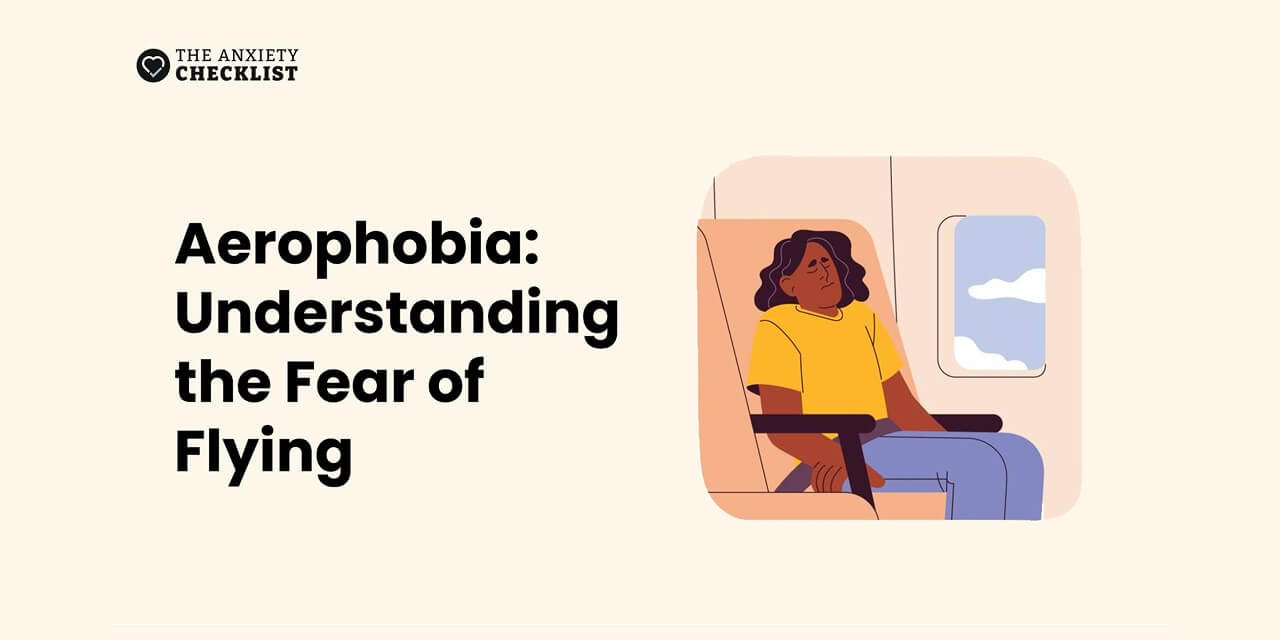What is Aerophobia?
Is anxiety keeping you stuck in your head?
Learn how to calm your body, break fear cycles, and rebuild confidence with a clear, guided system.
Symptoms and Risk Factors
Aerophobia can show up in different ways. For some, it starts days before a flight. For others, symptoms kick in as soon as they step into an airport.
Let’s look at the common risk factors and what puts someone at risk of developing a fear of flying.
Symptoms
Here are some common signs of flying anxiety and Aerophobia:
These symptoms can be so intense that people with a fear of flying avoid planes altogether.
Risk Factors for Aerophobia
Several factors can increase your chances of developing flight anxiety or Aerophobia:
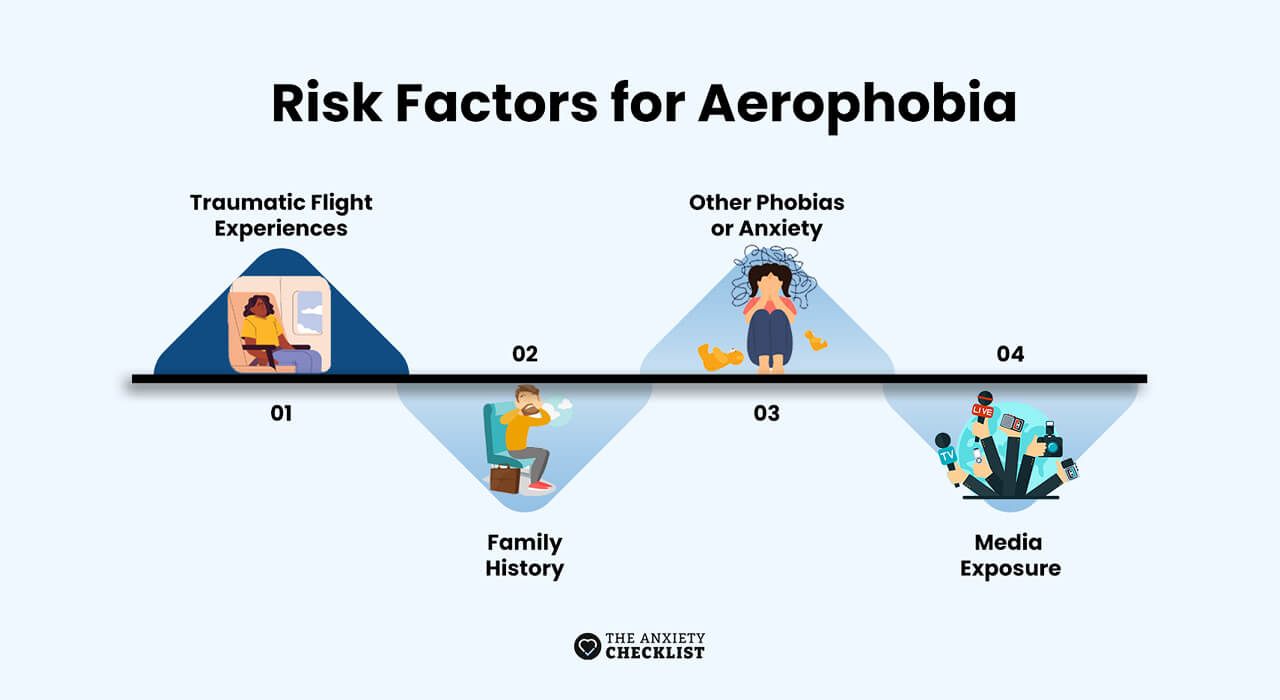
Now, these risk factors don’t always lead to Aerophobia. They can, however, make you more vulnerable, especially if you’re already an anxious flier.
How Aerophobia Affects Your Life
Like other types of phobia, Aerophobia can affect your quality of life. It is not just about feeling nervous before a flight. Here’s how a fear of flying affects your life.
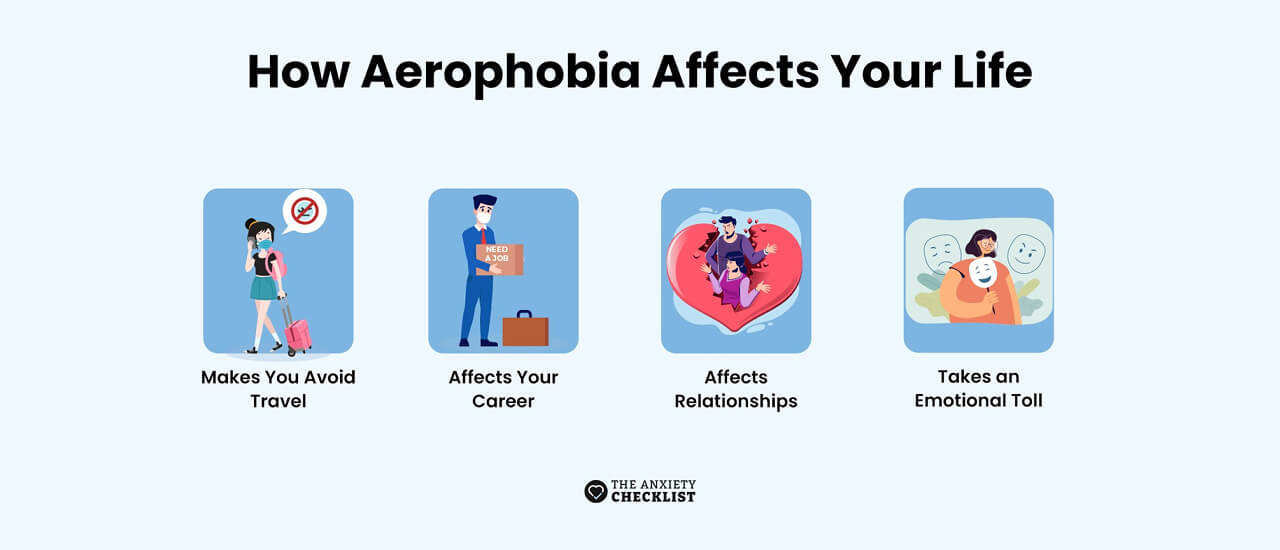
Makes You Avoid Travel
People with a fear of flying often avoid trips that require flying. This can limit job opportunities or keep you from seeing loved ones who live far away.
Some choose to drive long distances instead. While this feels safer, it can add stress, time, and cost to your travel plans.
Affects Your Career
If your job requires travel, flying anxiety can hold you back. You may avoid roles that involve flying. You might even turn down promotions or new projects because of it.
Affects Relationships
Relationships can suffer too. You may skip family reunions or vacations with friends because of your flight anxiety.
Loved ones might not understand your fear. They may think you’re being difficult when in reality, flying feels impossible for you.
Takes an Emotional Toll
Living with Aerophobia can be mentally exhausting and cause emotional wounds. You might feel embarrassed or frustrated with yourself. Some people feel isolated because they can’t do what others find normal.
Recognizing how a flying phobia affects your life is the first step to finding help.
Next, we’ll look at how Aerophobia is diagnosed and tested.
Diagnosis and Tests for Aerophobia
If you think you have Aerophobia, talking to a mental health professional is a good first step.
How Aerophobia is Diagnosed
There is no blood test or scan to diagnose fear of flying. Instead, your doctor or therapist will ask about your symptoms.
They may ask questions like:
These questions help them understand how serious your flying anxiety is and how it affects your life.
Screening Tools
Sometimes, therapists use questionnaires or anxiety tests to assess your flying anxiety.
These tests ask about your fears, how long you’ve felt them, and how they impact your daily life.
When to Seek Help
If your flying phobia stops you from living your life fully, it is time to get help.
Treatment can make a big difference. Many people find that, with the right support, flying in a plane becomes less scary over time.
Management and Treatment of Aerophobia
Aerophobia can be overwhelming. But the good news is, there are many ways to manage and treat it. They include cognitive behavioral therapy, exposure therapy, group therapy, and medication.
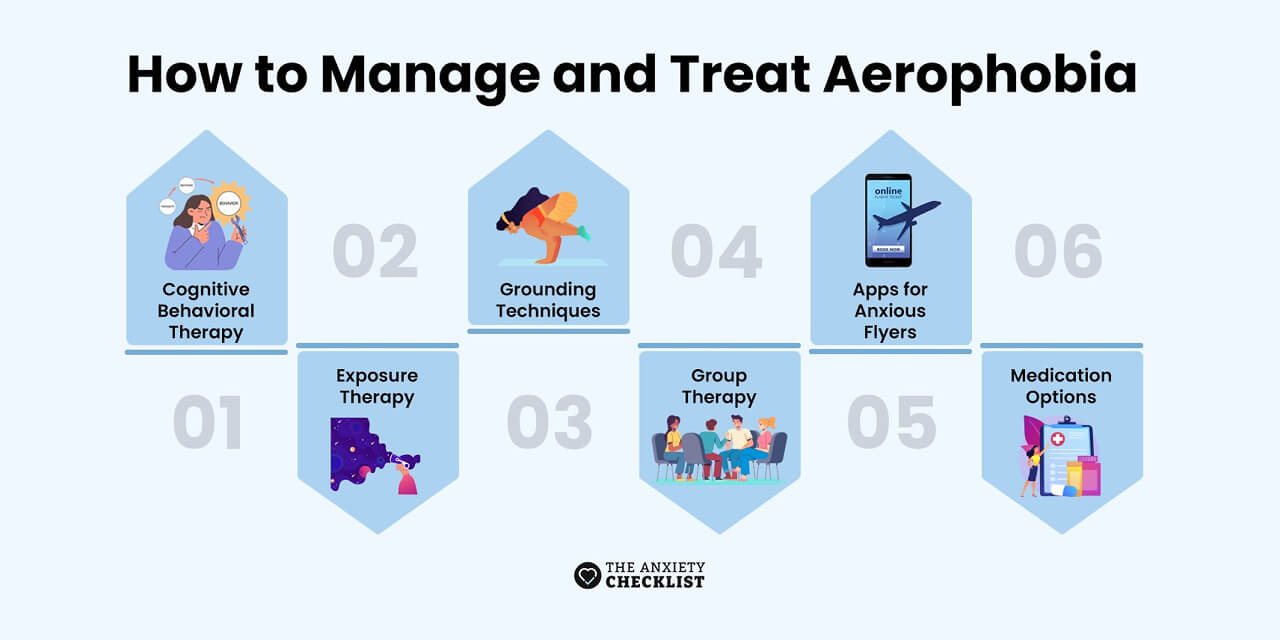
Cognitive Behavioral Therapy (CBT)
CBT is one of the most effective treatments for fear of flying. It helps you change the negative thoughts that fuel your flying anxiety.
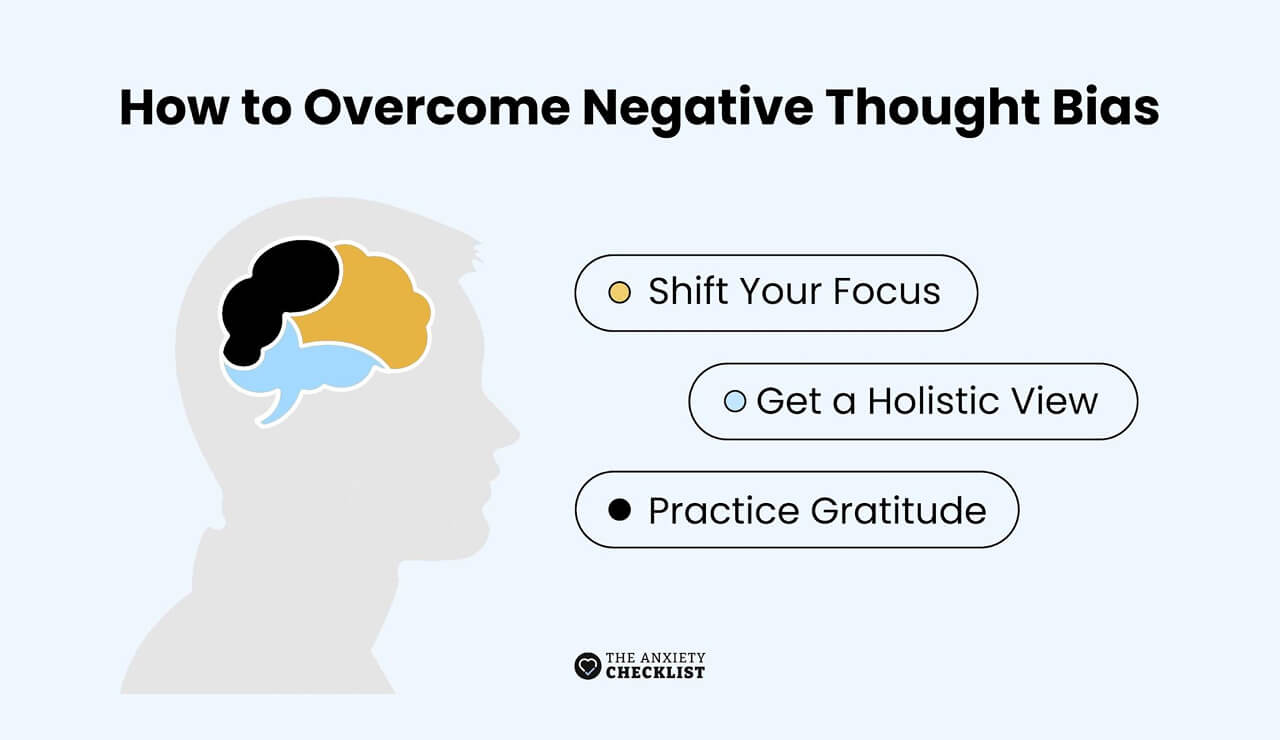
A therapist will teach you how to:
Exposure Therapy
Exposure therapy helps you by letting you face your fears slowly.
For example, you can start by looking at pictures of planes. Then, you move to visiting an airport. Eventually, you’ll take a short flight with your therapist's support.
These days, exposure therapy virtual reality tools, such as computer simulations of flights, can also support this treatment.
This gradual exposure helps reduce flight anxiety over time.
Grounding Techniques
Grounding keeps you focused on the present instead of spiraling into "what ifs.” There are many grounding techniques you can use.
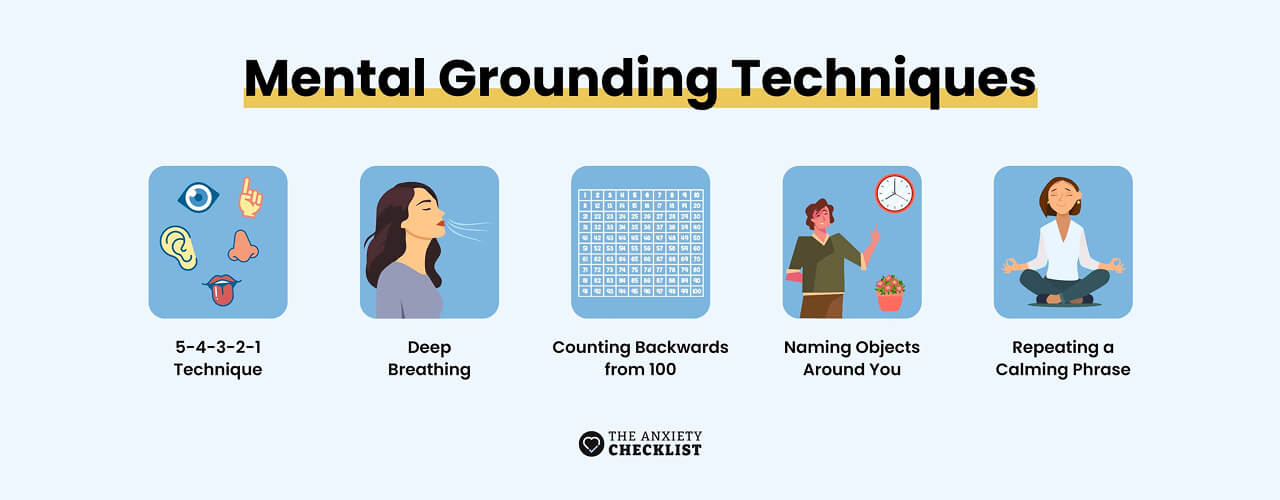
One popular grounding strategy is the 5-4-3-2-1 method. Here, you identify five things you can see, four things you can touch, and three things you can hear. Then, two things you can smell and one thing you can taste.
You can also hold a small object during the flight, such as a stone or soft cloth, to keep yourself grounded.
Group Therapy
Another option is taking a group therapy course for your fear of flying. These classes usually run for 2-3 days, mostly over a weekend, and are sometimes offered by airlines.
As part of the course, you may meet pilots, discuss airline safety, and even get a chance to board a plane.
Sometimes, just getting to know the process and environment better helps you be more comfortable.
Medication Options
Sometimes, doctors prescribe medications for flying phobia. These may include:
Medication can’t cure Aerophobia, but it can help manage symptoms when flying.
Relaxation and Breathing Techniques
Breathing exercises and relaxation techniques can help calm flying-related anxiety.
Try these simple breathing exercises before and during flights:
Meditation apps like Headspace and Calm can be helpful when flying.
Apps for Anxious Flyers
Speaking of apps, SOAR, Turbcast, and Fear of Flying Hypnosis are examples of applications designed to support anxious flyers.
These apps provide educational resources about flying and tools to manage anxiety during flights. They provide reassurance and a sense of control to nervous flyers.
Quick Tips for Managing Fear of Flying
Here are some simple tips to help you feel calmer on your next flight.
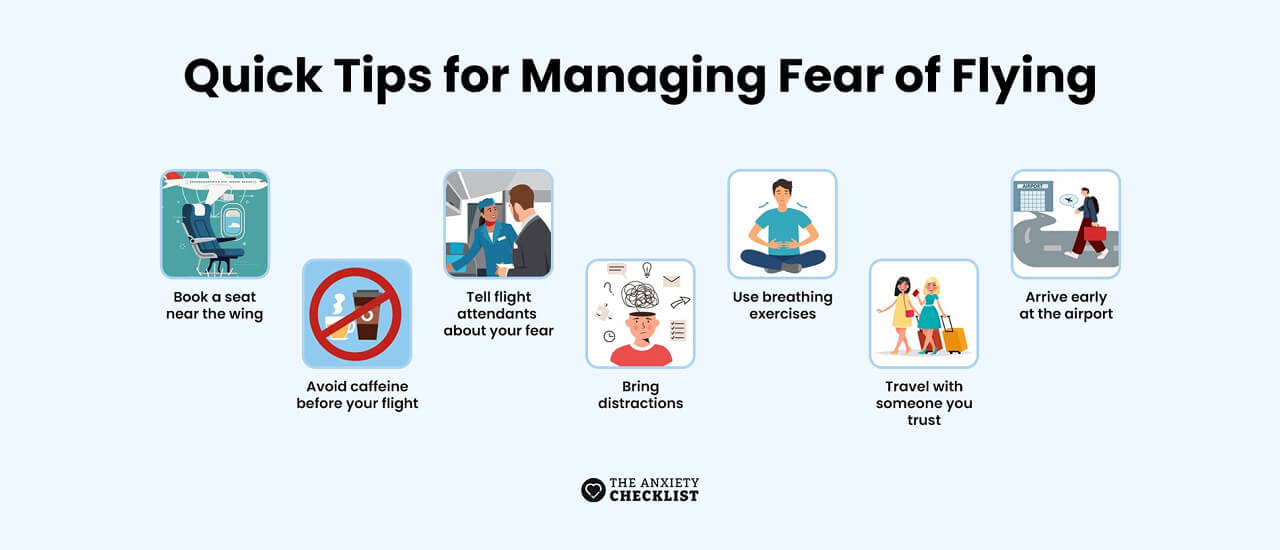
Book a Seat Near the Wing
Choosing a seat near the wing can make your flight feel safer. This area of the plane experiences less turbulence, which can ease flying anxiety.
If you’re booking online, check the seating map and pick a spot over or just in front of the wing. Feeling less movement in the air can make you feel calmer.
Avoid Caffeine Before Your Flight
Caffeine can make your body feel jittery or shaky. These feelings can make your flight anxiety worse. Try drinking water before your flight instead. Staying hydrated can help your body feel more comfortable in the dry cabin air.
Tell Flight Attendants About Your Fear
Flight attendants are trained to help nervous passengers. Letting them know about your fear of flying can make a big difference.
They might check on you during the flight or offer reassurance if turbulence happens. Just knowing someone understands can ease your mind.
Bring Distractions
Having something to focus on helps keep anxious thoughts away. Download movies, music, podcasts, or audiobooks before you leave home.
Reading a favorite book or playing games on your phone can help. The more occupied your mind is, the faster time will pass.
Use Breathing Exercises
Deep breathing calms your body and helps you feel in control. Try breathing in for four counts, holding for four, then breathing out for four.
Repeat this whenever you feel your heart racing or your chest tightening. Practicing this before your flight can make it easier to use on the plane.
Travel with Someone You Trust
Flying with a friend or family member can ease flight-related anxiety. They can distract you with conversations or hold your hands during take-off and landing.
Just knowing someone you trust is beside you can bring comfort. If possible, plan trips with a supportive travel partner.
Trying even a few of these tips can make your next flight feel more manageable.
Living with Aerophobia
Living with Aerophobia isn’t easy. It can affect your travel plans, job opportunities, and relationships.
You might feel embarrassed when you turn down flights or frustrated when you can’t visit family who live far away.
But remember this:
Many people live with flying anxiety and find ways to manage it.
Some choose therapy to work through their fears. Others use relaxation techniques or medication to make flying possible.
If you have a fear of flying, know that it doesn’t define you. With the right help, you can travel more confidently and enjoy new experiences again.
Frequently Asked Questions
Final Thoughts
Previous Article
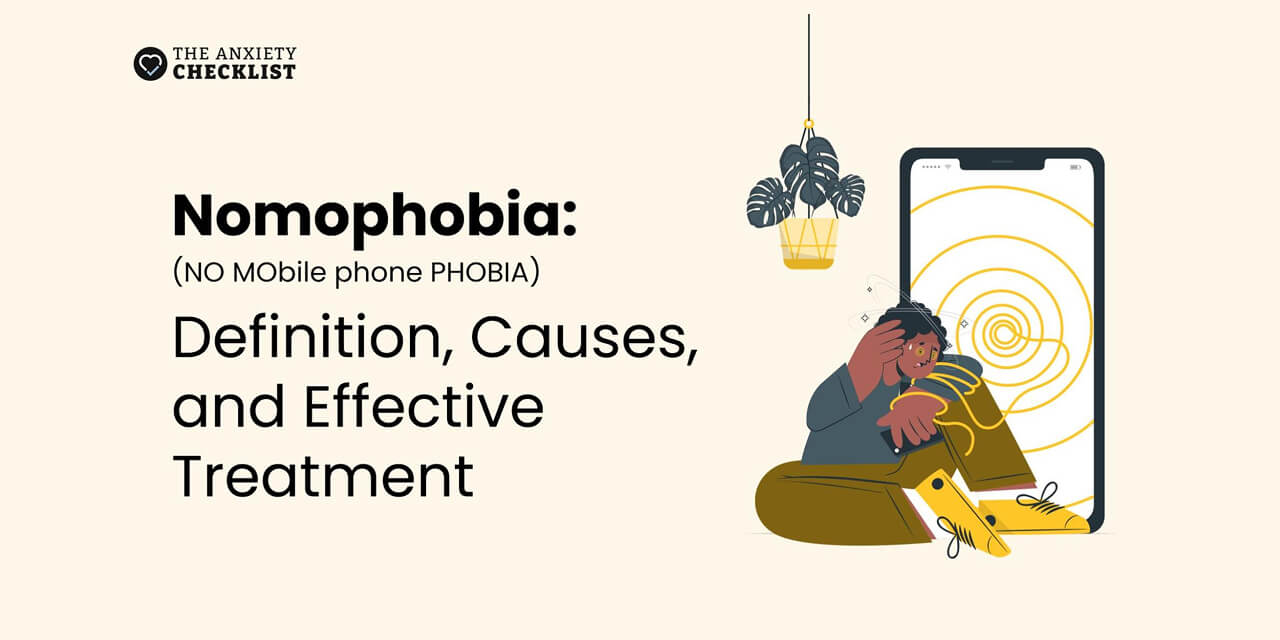
Nomophobia: Definition, Causes, and Effective Treatment
Next Article
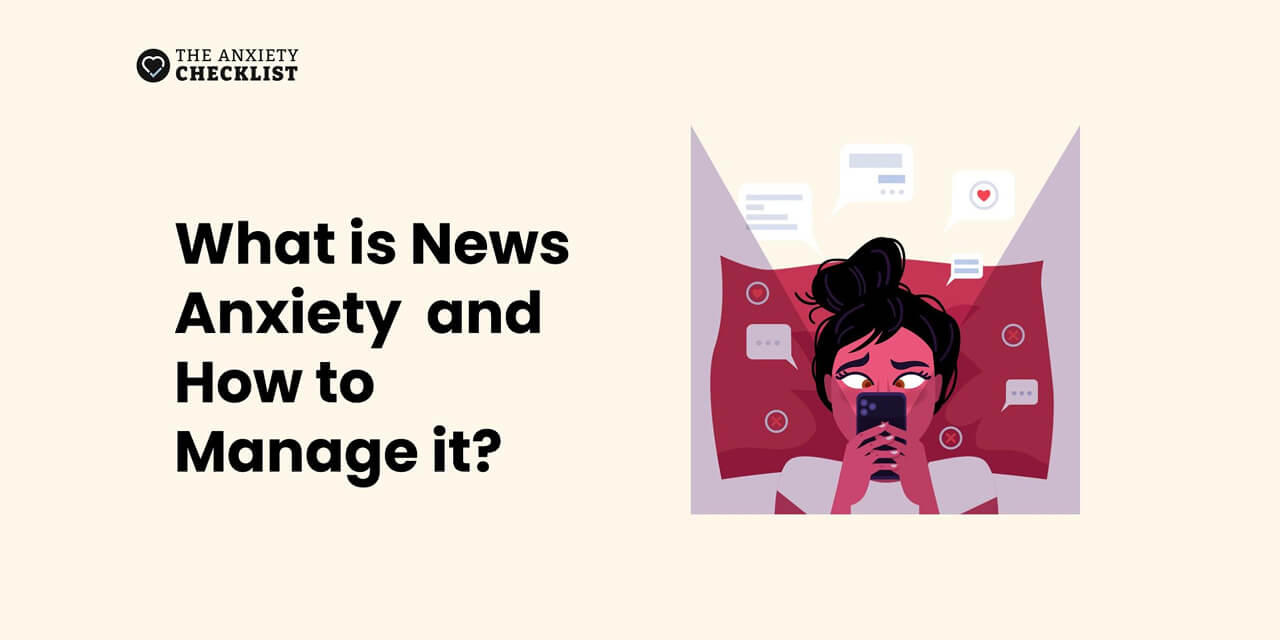
What is News Anxiety and How to Manage it?

Advertisement
BetterHelp
BetterHelp makes starting therapy easy. Get a tailored therapist match based on your needs and preferences - in as little as 24 hours!
Enjoy 20% off your first month with code "anxietycheck"

4 million+ Helped
Access Therapy 24/7
Preferred by 94% of users
If you are in a crisis or any other person may be in danger - don't use this site. These resources can provide you with immediate help.


